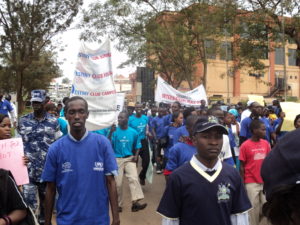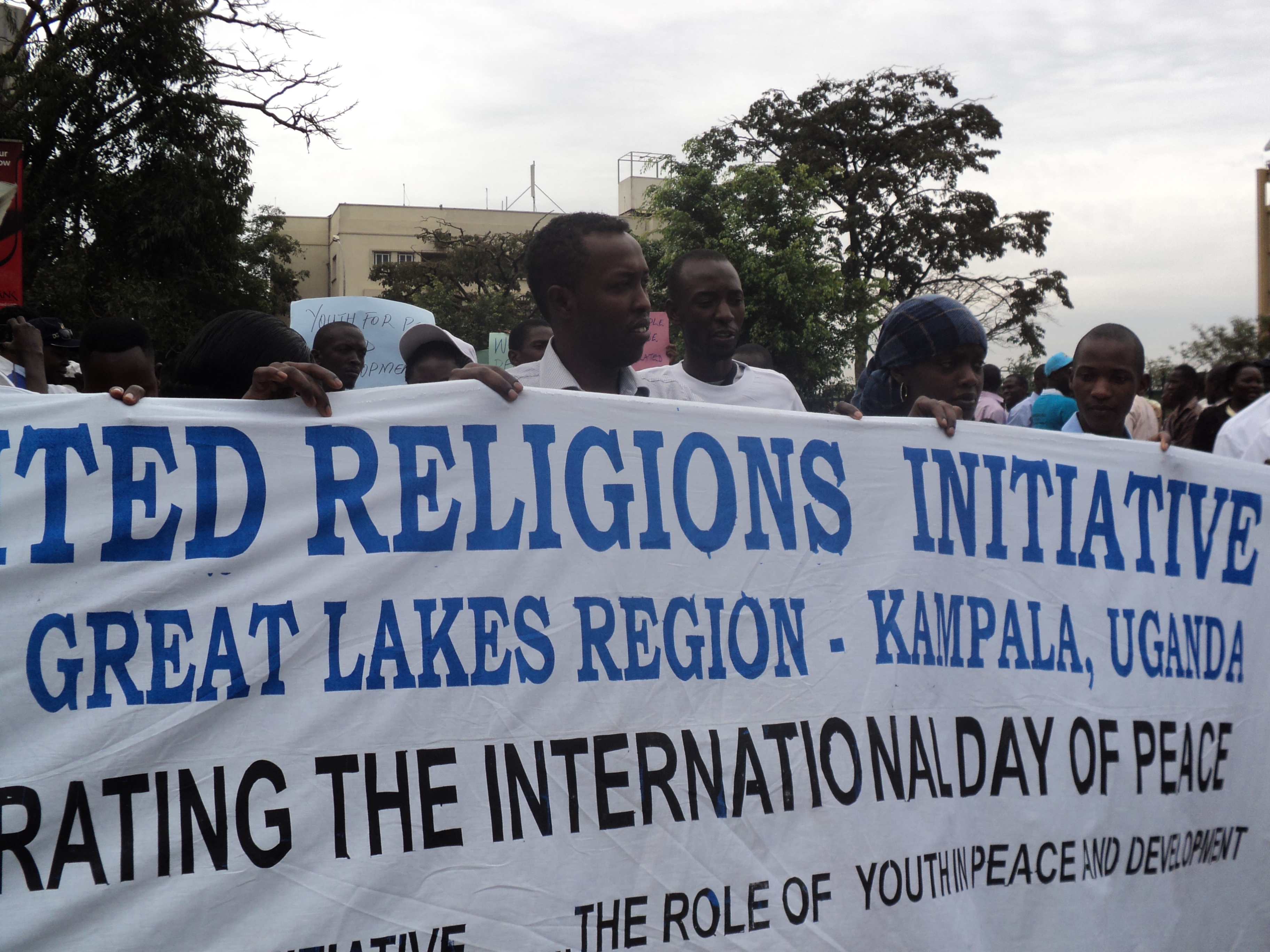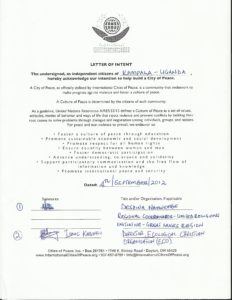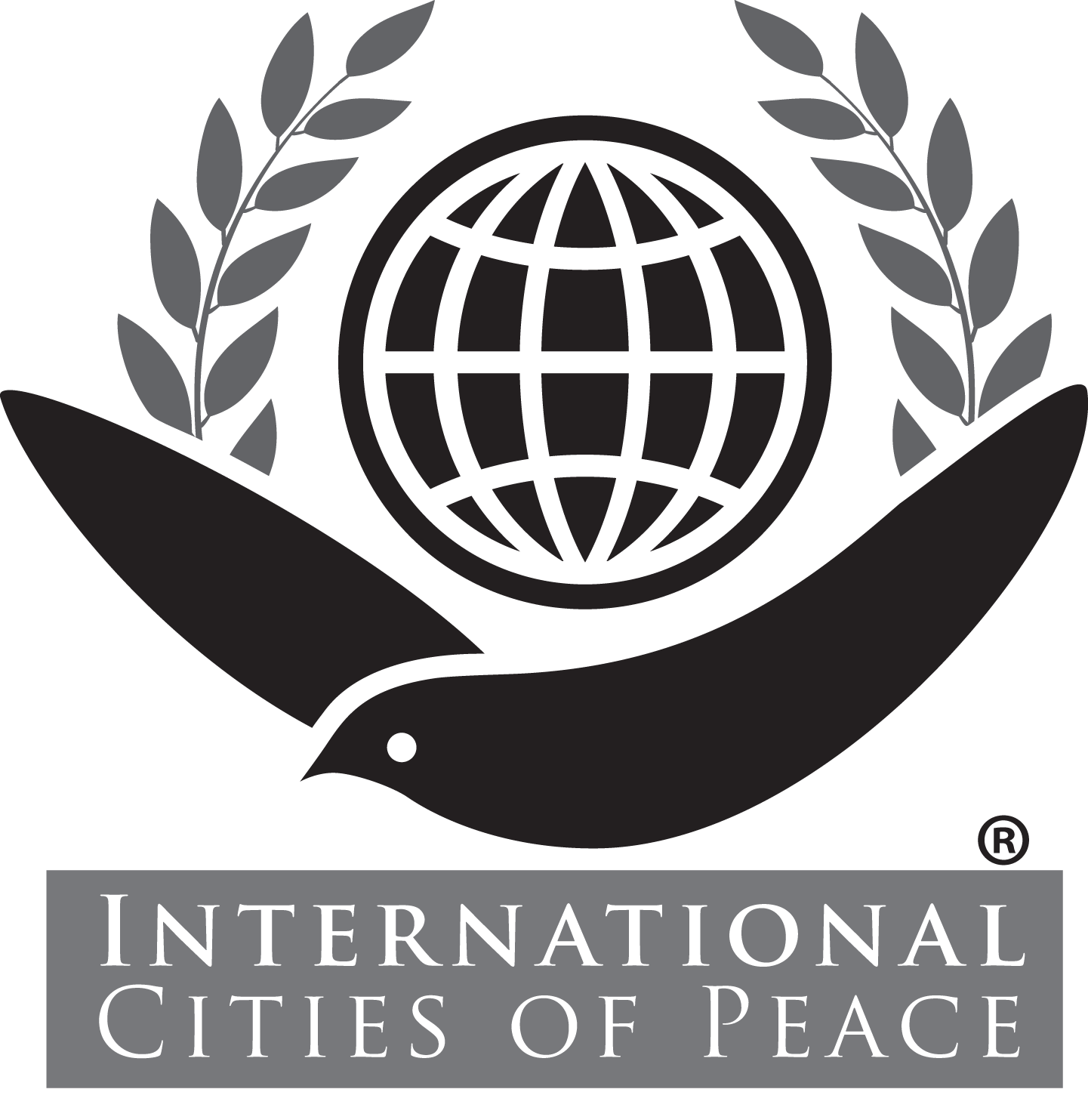Kampala, Uganda: City of Peace
Welcome Despina Namwembe and colleagues who have created an International Cities of Peace initiative in Kampala, Uganda: City of Peace. Despina is a social scientist who, with others in Uganda, have shown deep courage in taking a stand for peace.
Note: Introduction page with information primarily at the time of joining International Cities of Peace. For updates, please contact the liaison.
VISION:
Our vision is to see our country and region as sanctuary for peaceful living for all individuals in fulfillment of their life’s dreams and aspirations.MISSION:
Our mission is to work with people from the different religious and cultural backgrounds to promote a culture of peace within the different parts of the country and the entire great lakes region through offering safe spaces for constructive dialogue.

OBJECTIVES:
• To offer safe spaces for non violence and constructive dialogue
• To promote faith values that support peaceful co-existence and respect for human lives.
Letter of Intent
• To advocate for justice systems that promote fairness through the Golden Rule of treating the other the way we want to be treated.
• To advocate for women’s justice systems that promote engendered policies, inclusion and active participation.
• To create awareness for ecological responsiveness within communities.
About Despina Namwembe:
Email: Despina Namwembe <dmwembe@yahoo.com>
About Kampala, Uganda (from Wikipedia):
Kampala is the largest city and capital of Uganda. The city is divided into five boroughs that oversee local planning: Kampala Central Division, Kawempe Division, Makindye Division, Nakawa Division and Lubaga Division. The city is coterminous with Kampala District.
The main campus of Makerere University, one of East and Central Africa’s premier institutes of higher learning, can be found in the Makerere Hill area of the City. Kampala is also home to the headquarters of the East African Development Bank, located on Nakasero Hill.
History: Mutesa I, the Kabaka (king) of Buganda, had chosen the area that was to become Kampala as one of his favorite hunting grounds. The area was made up of hills and wetlands. It was an ideal breeding ground for various game, particularly a species of antelope, the impala (Aepyceros melampus). When the British arrived in the area they called one of the hills ‘The Hill of the Impala’ due to the large presence of impala. The native Baganda used this reference in their local dialect (Luganda) – ‘Akasozi K’empala. It is worth noting that it is not unusual for Luganda to adopt the soundings of English words into the language – for example a car in Luganda is ’emotoka’ (a motor car). So K’empala formally became ‘Kampala’ with repeated usage, and when the British colonial rulers needed a name for the city they adopted this reference.
The city grew as the capital of the Buganda kingdom, from which several buildings survive, including the Kasubi Tombs (built in 1881), the Lubiri Palace, the Buganda Parliament and the Buganda Court of Justice. Severely damaged in the Uganda-Tanzania War, the city has since then been rebuilt with constructions of new buildings including hotels, banks, shopping malls, educational institutions, hospitals and improvement of war torn buildings and infrastructure. Traditionally, Kampala was a city of seven hills, but over time it has come to have a lot more.
DO YOU THINK YOUR COMMUNITY CAN BE A CITY OF PEACE? SEND AN EMAIL!
Note: If information or photos used here are copyrighted, please contact us and we will immediately delete the copyrighted material.


